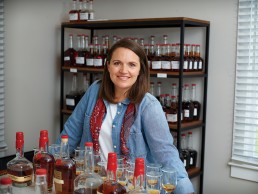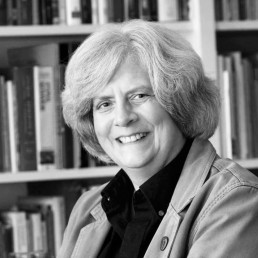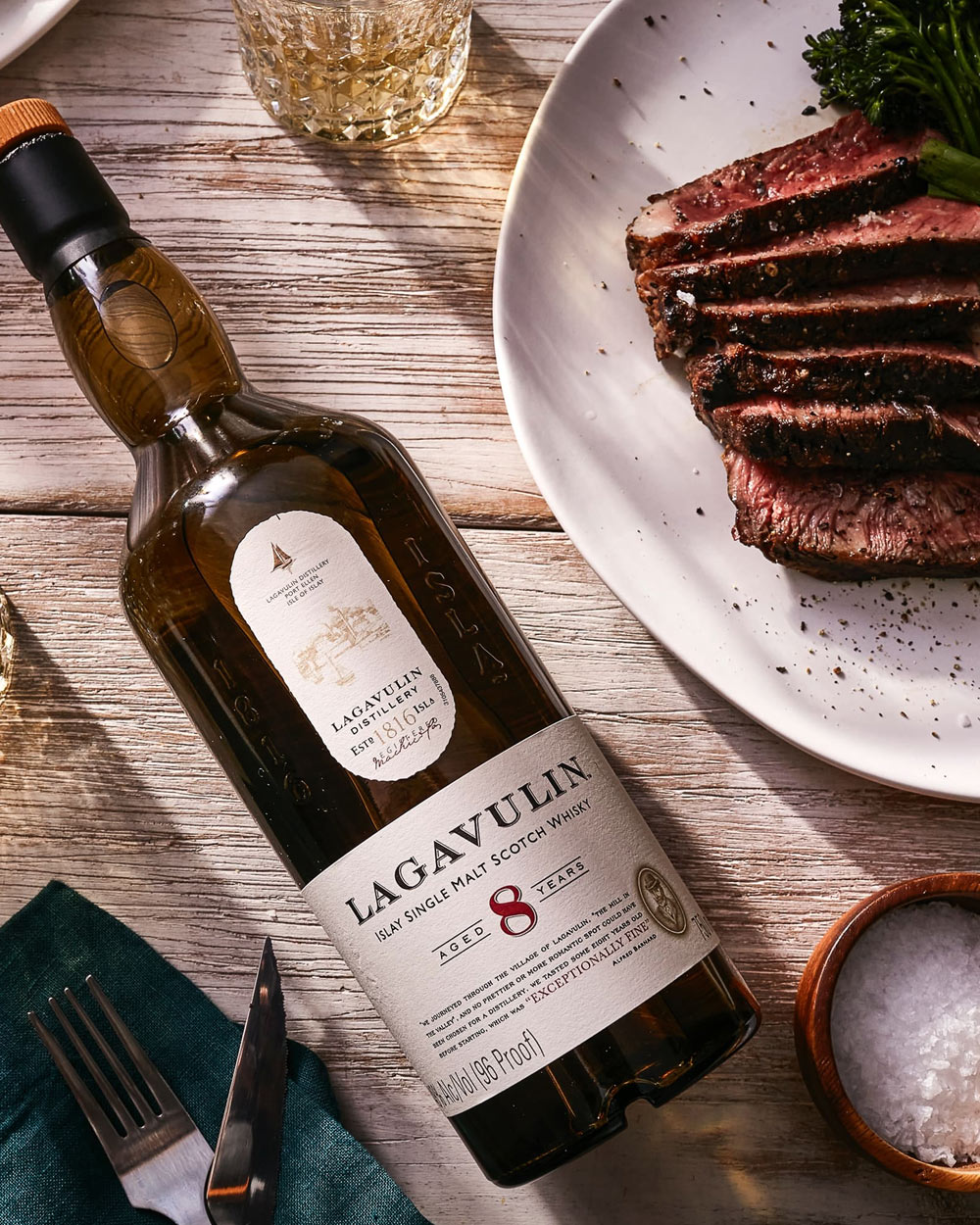When Maker’s 46 was released in 2010, it was the first time in Maker’s Mark’s history that a bourbon besides its flagship wheated expression was offered.
Chairman Bill Samuels, Jr. was retiring and wanted to create an expression to define his legacy. In the dozen years since then, Samuels’ technique, which was to introduce specially toasted staffs to already-aged barrels, has seen numerous variations.
The person guiding these variations is Director of Innovation Jane Bowie. She oversees the Wood Finishing Series, which is designed to amplify and showcase various components of the Maker’s taste profile. On a recent spring morning, I was one of a handful of bourbon writers invited into her lab on the grounds of the Loretto distillery to see how the evolution of the next entry in the series was progressing.
“Welcome to our behind the scenes process… an overview to how the wood finishing series happens,” said Bowie in greeting, She was joined by Innovation Manager Beth Buckner, a chemist in charge of recording results of tasting experiments.
Bowie continued, “We’re entering year four of this series and we set it up as a storytelling series and every year there’s been a different taste goal, starting each project about 18 months before it actually hits the market. How it works is we start along with Denny (Potter, master distiller) and Rob (Samuels, chairman). The four of us kind of sit down and talk about the story we want to tell and the taste goals that should come out of that. This year we want to celebrate barrel rotation. As you know, we rotate our barrels halfway through their lives at Maker’s Mark. Half of our inventory goes into the warehouse in the top half at the beginning. After three Kentucky summers, August 1st, every year we start rotating.”

Bowie explained that “extraction” and “reaction” were at work at different levels of the warehouses. “At the top of the warehouse, where it’s hot and dry, the aromas are spicy. You get some of the more woody barnyard smells, but in a toasty way.” That spicy, toasty character is being extracted from the wood.
Meanwhile, down on the lower floors, oxidation of the liquid is the reaction creating, according to Bowie, “Dark fruit notes. Also, chocolate, leather, and tobacco.”
A variety of specially toasted stave pieces had been introduced to sample bottles of bourbon drawn from barrels stored at different levels. These steeped for different periods of time. Over the next hour, we tasted and took notes. The differences were striking.
Bowie and Buckner took note of the flavors we were getting. It was fascinating to be let in on one of the many, many rounds involved in the process of producing new, unique, limited expressions of an iconic brand.
Why go to all this trouble? Bowie has the perfect answer. “Because people love new things. Plus, whiskey is fun! Right?
Former restaurant critic and beverage columnist for the Louisville Courier-Journal, Susan is bourbon columnist for Food & Dining and Covey Rise magazines and also writes for Bourbon+, LEO Weekly, and American Whiskey (tasting notes and ratings). Susan has authored or co-authored six books including Kentucky Bourbon Country: The Essential Travel Guide, The Kentucky Bourbon Cocktail Book, The Bourbon Tasting Notebook, and The American Whiskey Tasting Notebook, and Which Fork Do I Use with My Bourbon? – Setting the Table for Tastings, Food Pairings, Dinner, and Cocktail Parties. Susan is a member of the Order of the Writ, former president of both the Bourbon Women Association and the Kentucky chapter of Les Dames d’Escoffier International, an organization of women culinary professionals.


